Architects: Want to have your project featured? Showcase your work through Architizer and sign up for our inspirational newsletters.
Curtains may not be a hot topic in architecture, but these tactile textiles do have the power to radically transform our perceptions of space. Curtains create a careful layering of light, form, and building skin. They can be dividers, screens, or flexible openings along a threshold or envelope. As space becomes layered by curtains or other elements, so, too, does our understanding of systems, nature, and the processes that shape our human condition. While they may seem mundane, curtains powerfully shape our architecture.
Both screens and shrouds alike, the following collection explores dynamic curtain designs and their application in contemporary projects across the world. Residences, commercial spaces, institutions, and various other programs are represented, all drawn across a range of scales. The projects showcase both traditional and reimagined curtain applications and designs. Whether they are interior, exterior, or liminal in nature, the curtains were designed in careful relationship to building structure, fenestration, and orientation. Using curtains, each project heightens spatial perception while examining the relationship between views and light.

© Jan Bitter
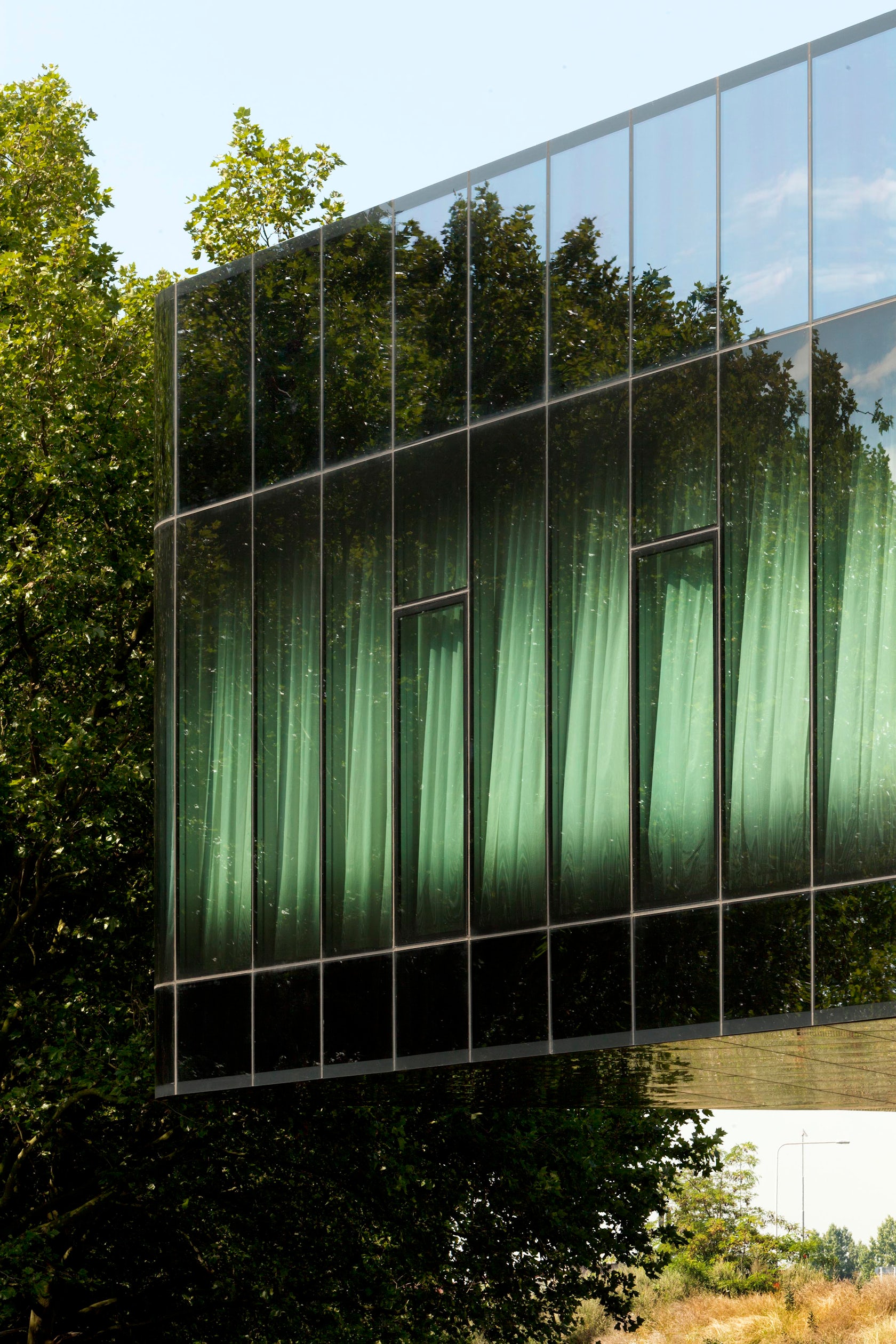
© Jan Bitter
Regiocentrale Zuid by Wiel Arets Architects, Kanaalweg, Maasbracht, the Netherlands
A commercial office building in Maasbracht, the Regiocentrale Zuid is a headquarters for water traffic control. Multiple waterway control centers were combined within this new office while also allowing elongated 360-degree views. Curtains were carefully placed along the envelope to help control views and reduce heat gain.

© Nuno Pimenta

© Nuno Pimenta
The Hedonist by Nuno Pimenta, Mannheim, Germany
The Hedonist was designed as a temporary hotel room. The structure was created to be placed in unusual or unexpected public space in Mannheim. Curtains help create a sense of privacy in the otherwise greatly open and public setting.
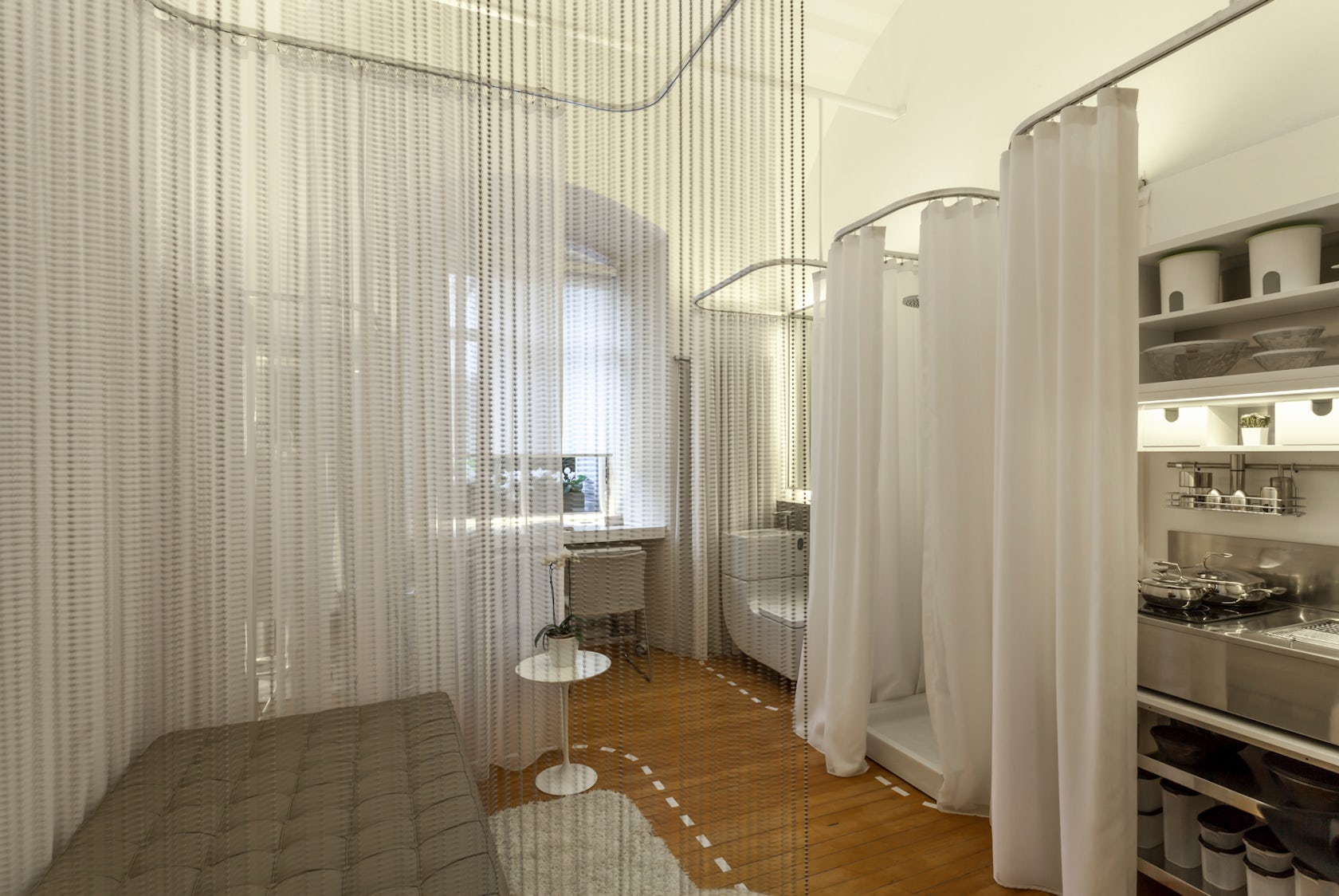
© Federico Kulekdjian
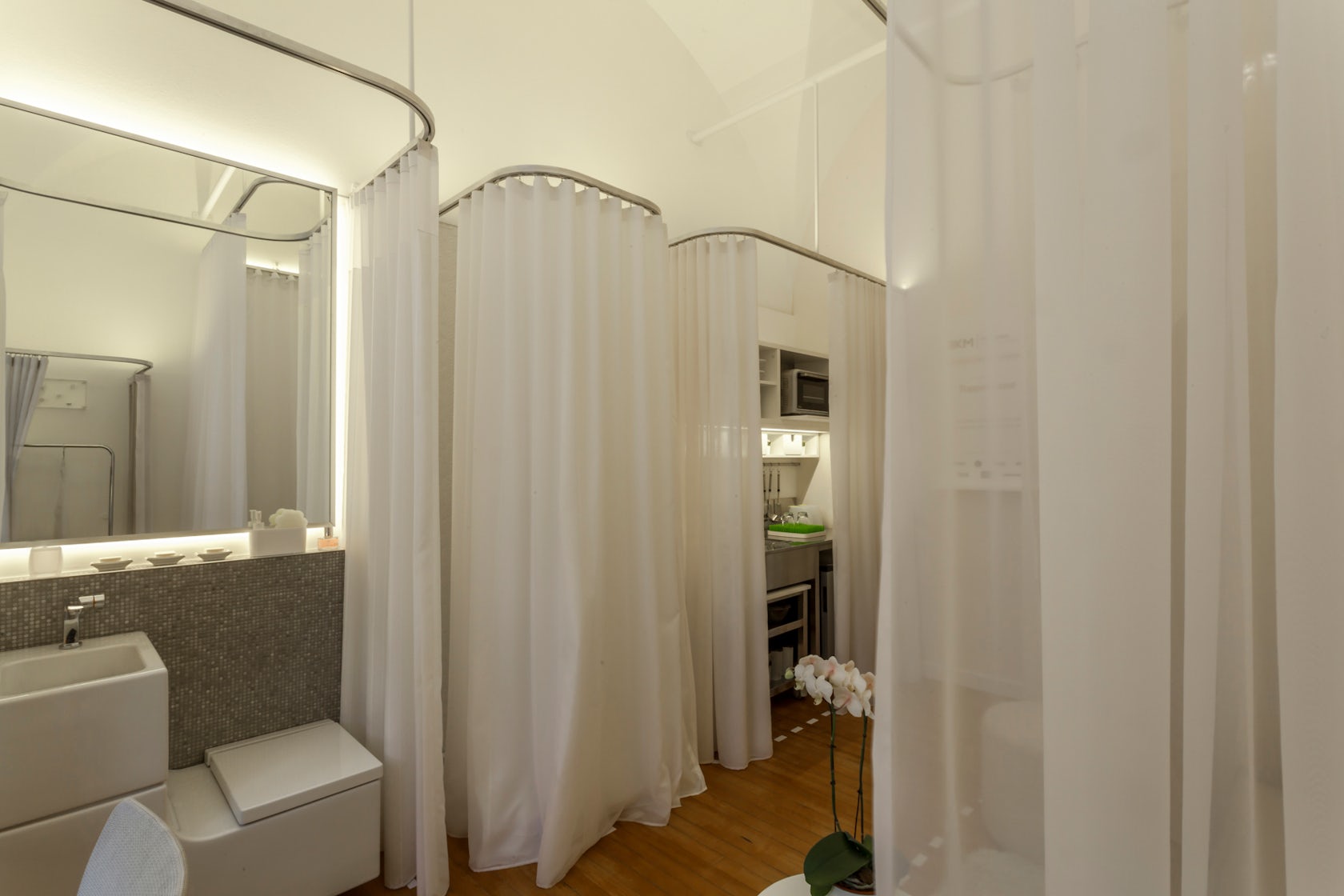
© Federico Kulekdjian
ANEMOI by BKM Bureau de Arquitectura, Buenos Aires, Argentina
ANEMOI was designed to explore new ways of living and rethink the lack of space in contemporary cities. The project works with the concept of boundaries where space can expand or shrink according to owner needs. The adaptable textile curtains help achieve the conceptual goals while also materializing functional boundaries.


Macalester College Janet Wallace Fine Arts Center by HGA Architects and Engineers, Saint Paul, Minn.
This concert hall was transformed into a state-of-the-art facility, undergoing renovation to increase both flexibility and functionality. Undulating red oak slats line the perimeter of the hall, while fabric curtains are concealed behind the wood lattice. The curtains are designed to help meet varying acoustic needs, while the space also allows passerby to engage with the work.

© Tina Demšar Vreš
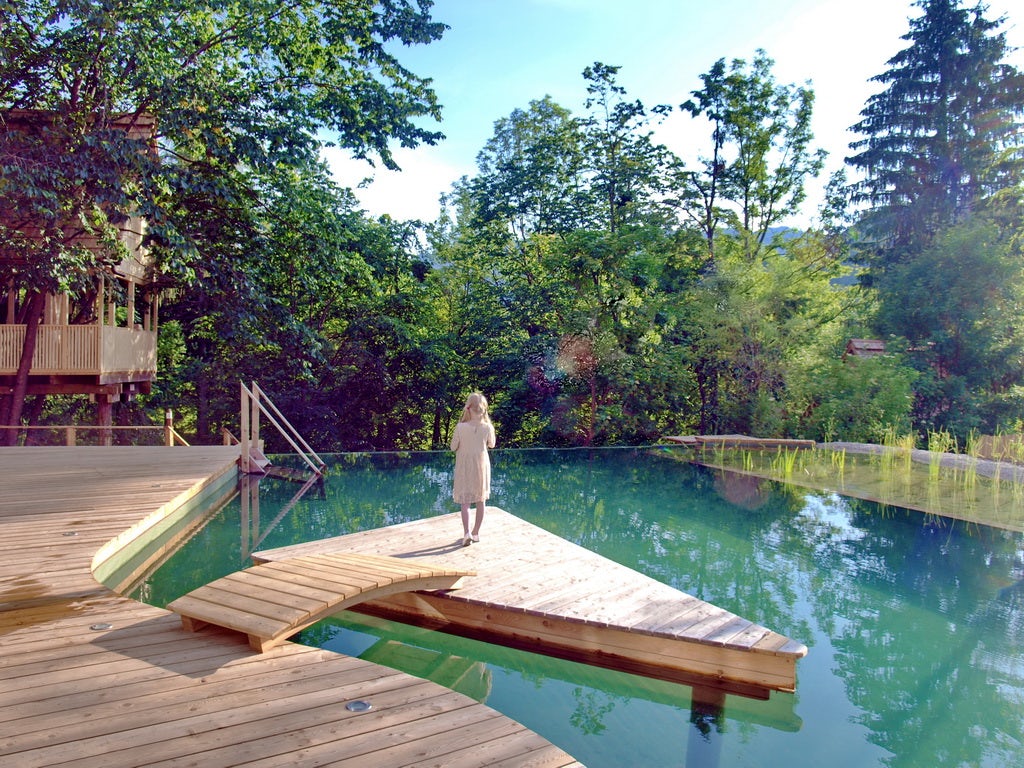
© Tina Demšar Vreš
BLED // Garden Village Bled by Landscape d.o.o., Bled, Slovenia
BLED is the first glamping resort in Slovenia. The site was a derelict nursery for the Vila Bled hotel. Curtains combine with natural materials like wood to create this eco-chic tourist resort.


Aichinger House by Hertl Architekten, Austria
In this project, the curtain becomes a dynamic part of the house’s envelope. The curtains provide privacy while also deflecting daylight and solar gain. In contrast, light illuminates the curtains at night, creating different geometries and patterns as switches are turned on and off within the house.

© ecru architetti
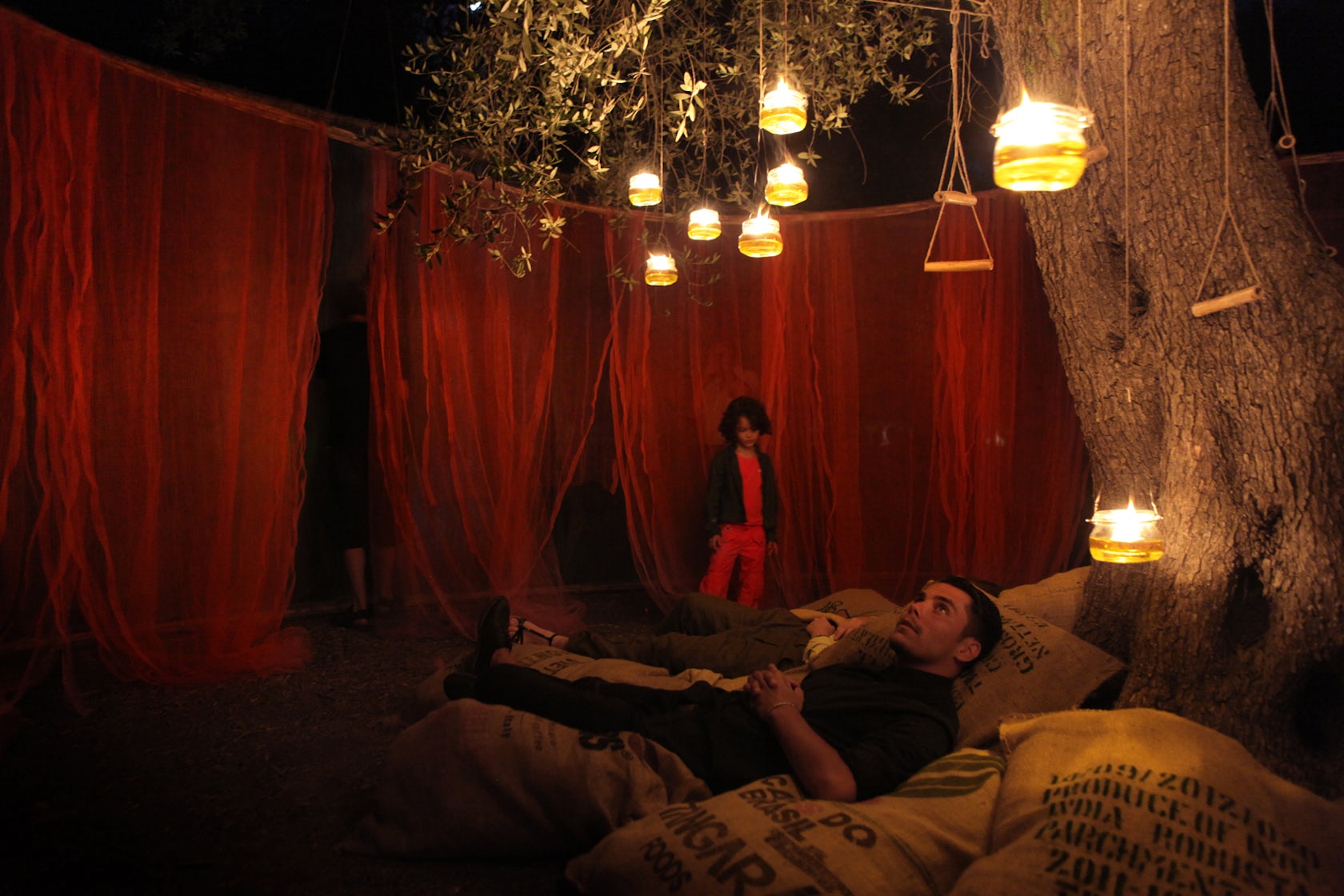
© ecru architetti
LOVO by ecru architetti, Lecce, Italy
LOVO is a playful project that combines a textile curtain façade around an olive tree. It was created as a microcosm, a space that allows both a perception of, and return to, nature. It is a refuge that includes two curtains or membranes that are varying degrees of porosity and transparency.

© Joan Guillamat Castells
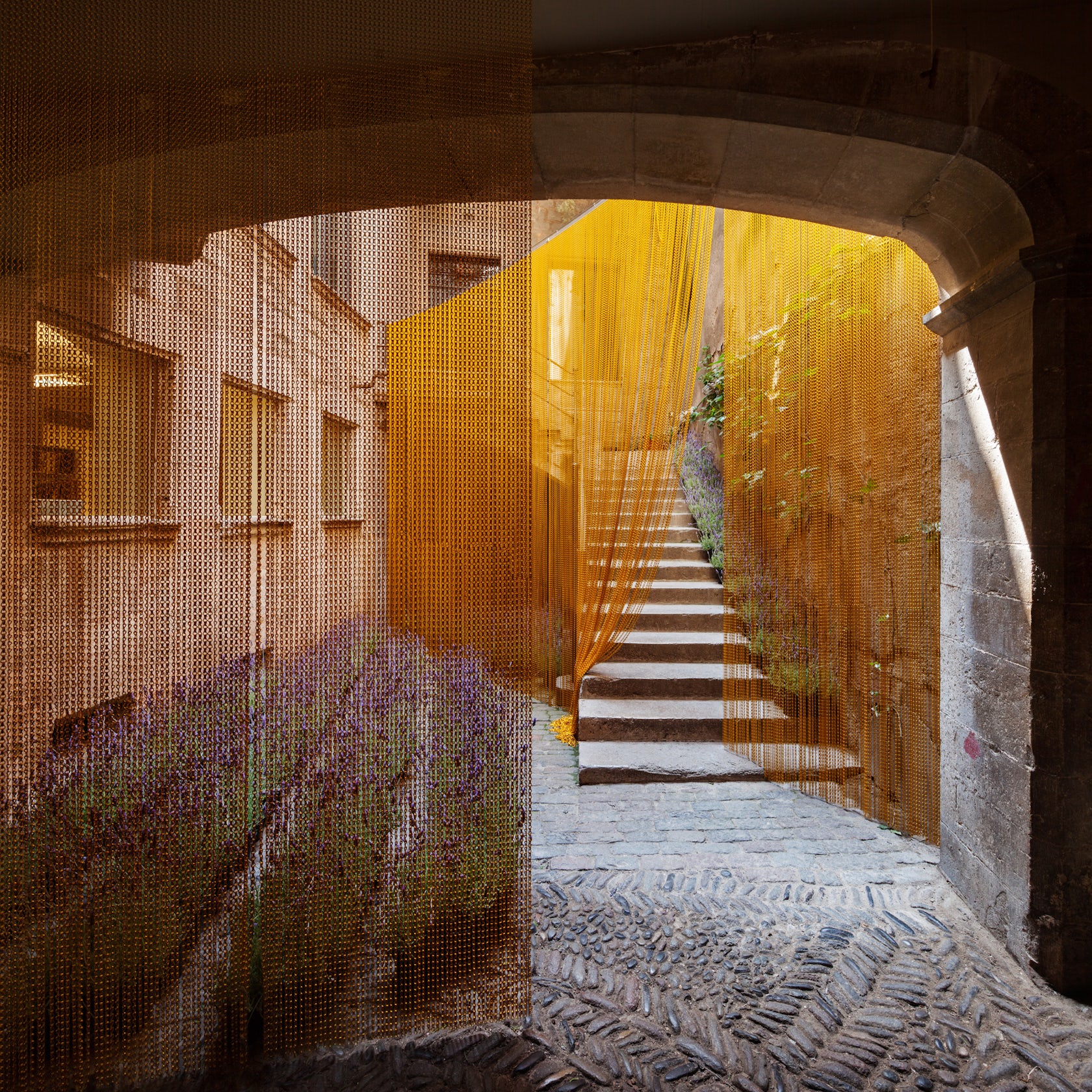
© Joan Guillamat Castells
Mosca by Pau Sarquella Fàbregas, Girona, Spain
This project in Spain reinterprets traditional curtains that were used as barriers against flies. It combines textile with lavender to create a space that filters views, varies transparency, and keeps insects away. The resulting space is one of discovery, recovery, and quiet dwelling.
Architects: Want to have your project featured? Showcase your work through Architizer and sign up for our inspirational newsletters.









